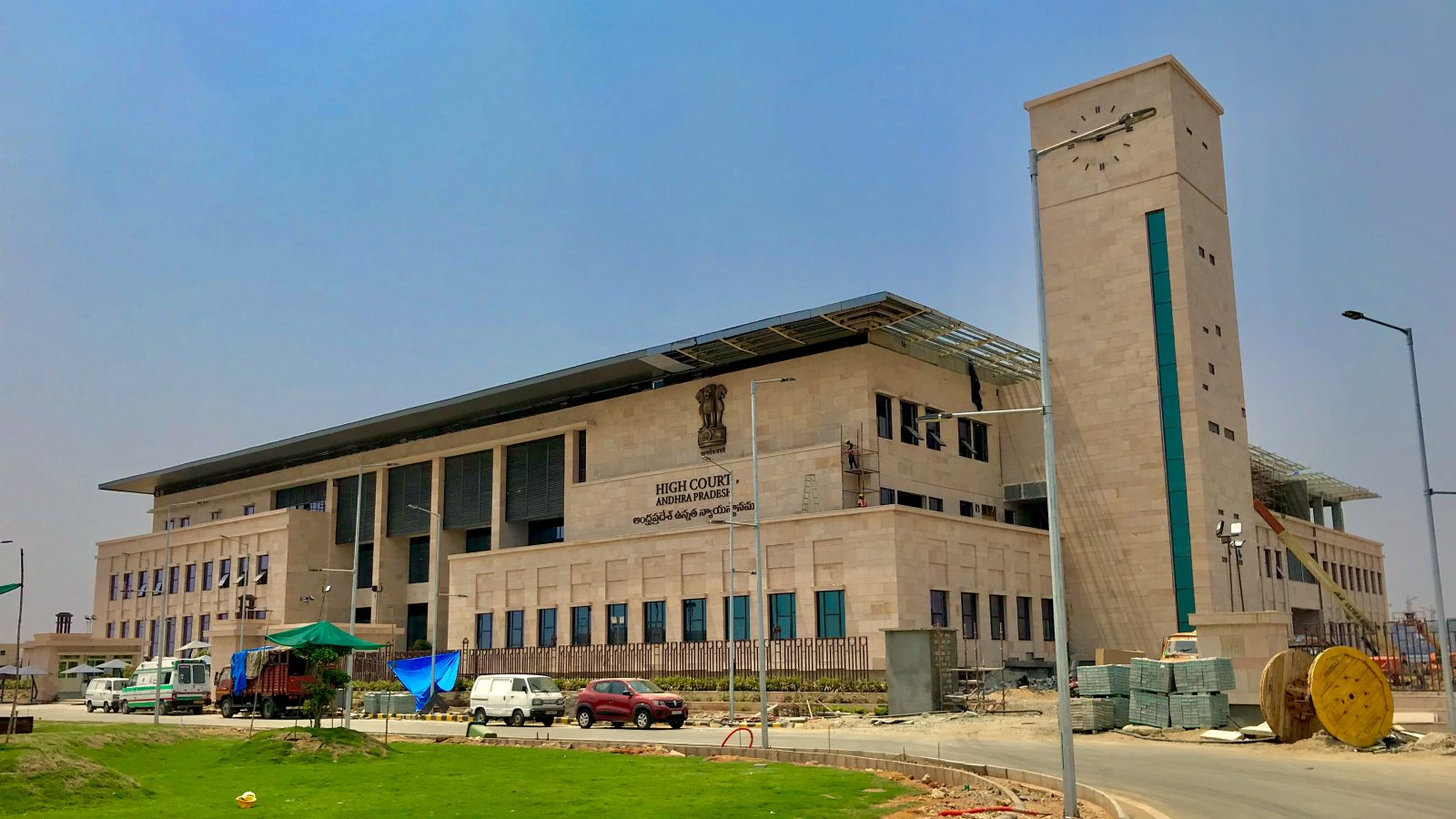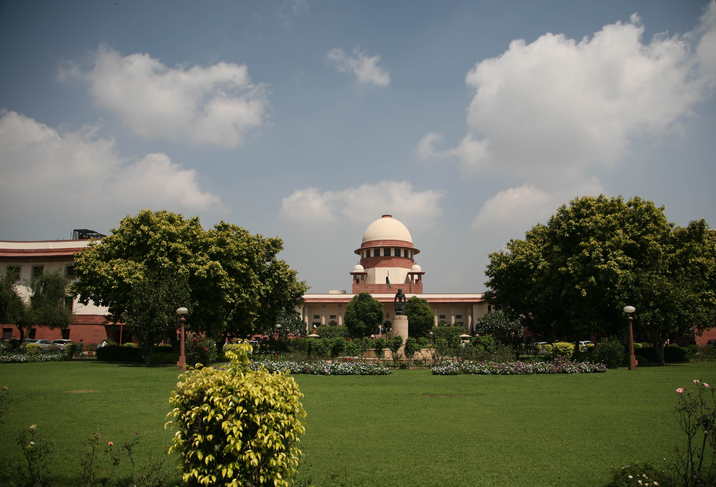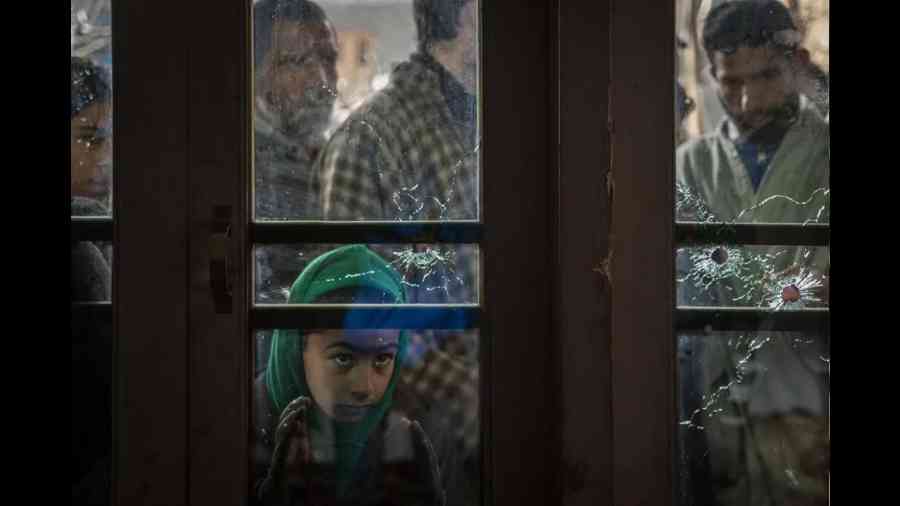
Freedom of Speech and the Courts: The Andhra Pradesh Land Scandal Case
The second in a two-part series
In Part I, I had argued that the interim order of the Supreme Court in the Sudarshan News case which imposed a prior restraint on future episodes being broadcast cannot be supported since it is not justified in law. The lack of justification was primarily on account of the fact that procedure was given a complete go-by. Besides, abstract notions of rule of law can scarcely be a safe guide for very specific orders, as appeared to be the case. The result that was reached however appeared substantively right, given how hateful the UPSC-Jihad show was.
In Part II, I argue that the “right result”, as opposed to the result dictated by the law, no matter how appealing, is a dangerous basis for courts to act. Direct evidence of this danger can be seen in the order of the Andhra Pradesh High Court prohibiting all publication of news relating to a case pertaining to the registration of an FIR against the former Advocate-General of Andhra Pradesh and a few others in relation to possibly irregular land purchases in Amaravati. A blanket bar on all media reporting in print and electronic media, including social media, can scarcely ever be the right thing to do unless there are extremely compelling circumstances. But if courts act outside the law to reach the “right result”, orders of this nature may become commonplace.
Part II- The Andhra Pradesh High Court Restricts Free Speech
Let me present the facts very briefly. From the order of the Andhra Pradesh High Court, it emerges that a former Advocate General of Andhra Pradesh (“former AG”) serving under the previous state government claimed he was being targeted by the present government which “foist(ed) a false case against him”. The case related to allegations of “purchase of property being aware of establishment of capital in Amaravati, prior to the date of identifying the capital in his name and that of others.”
The order makes it clear that an FIR was also registered in this matter on the same day the matter was heard in Court. The former AG filed a writ petition under Article 226 before the High Court alleging mala fide of the state agencies working under the present government and requesting the Court to halt any enquiry or investigation. If such enquiry had to be carried on, given the possibility of “political vendetta”, he asked that it should be under the supervision of a serving or retired High Court Judge.
From the facts as recorded in this case, there is only a single statement that suggests the likelihood of a “media trial” —
“It is further urged that after filing of this petition and recusal from the case by the Hon’ble Judge of this Court, registration of offence immediately projected over the social media and newspapers against the petitioner and also two daughters of a sitting Judge of the Hon’ble Supreme Court of India, amounting to scandalizing the authority with a mala fide intention, by way of media trial.”
This is extracted from a summary of the arguments of the petitioners in the order. In the operative part of the order where it records its decision, the Court asks the respondents (with the exception of the Chief Minister of Andhra Pradesh) to respond to the claims of the petitioner. In addition, it stays the enquiry and investigation and also directs that —
“the news in regard to registration of FIR or in the context of the said FIR shall not be made public in any electronic, print or social media, to foist the office of a former Advocate General and also with respect to the other alleged accused persons.”
Loud Silences
There is no independent analysis of the validity of the claims of the petitioner, no assessment of whether indeed the threat of a media trial was a credible one, no discussion whatsoever as to why the administration of justice would be impaired by reporting on the case (I am not looking into the question of stay of criminal proceedings in this piece). From the order it appears that the Court simply accepted the claims of the petitioner at face value. One is reminded of the conversation between Katherine and Petruchio in The Taming of the Shrew:
And be it moon, or sun, or what you please:
An if you please to call it a rush-candle,
Henceforth I vow it shall be so for me…
What you will have it named, even that it is,
And so it shall be so for Katherine.
Something similar appears to have happened in this case. The Court simply takes the former AG’s word at face value that this is political vendetta against him. His claim may certainly be true but it requires an assessment, no matter how preliminary, by the Court, before an order is passed on that basis. If there are reasons why the Court believes the claim is true, it should say so in its order. Otherwise the Court appears Katharine-like, a tamed shrew ultimately in thrall to what Petruchio says.
It is only when that preliminary claim of political vendetta is made out that the Court ought to have undertaken a second inquiry as to whether indeed media reporting in a high-stakes political matter can impair the administration of justice. This would have required a careful parsing of the evidence—the projections of the case so far in the media, the impact of such projections on the police and the possible deleterious effects on the right of the accused to get a fair trial. Without any evidence of the Court having undertaken such an inquiry, it barred media reporting of the case in a summary manner.
Much of this may have to do with the fact that there is a general perception prevalent for a while in the judicial fraternity that the independence of the media is in serious question. This may not be entirely devoid of substance especially in a state where the nexus between the media and politicians is deep. But such general perceptions cannot guide judicial orders, particularly in straightforward cases of applying settled law to clearly discoverable facts. That is plainly illegitimate.
Speculating on why such an order was passed might not get us very far. Instead, it might be more useful to introspect on a culture of litigation and judgment writing that has over time moved further and further away from fundamental principles of law. The Andhra Pradesh order is an exemplar of this new culture in three specific ways.
Patent Errors
First, the order does not state under what power it has barred all media reporting of the case. The constitutional power to issue writ petitions under Article 226 may be wide but does not encompass the power to bar all media publications on an issue. This is especially if the media itself (or a body to represent it) is not a party to the case (though all respondents in the case are not listed in the order, it does not appear from the arguments that any media was represented). Barring publication before hearing a party falls foul of the basic principle of justice that no person shall be condemned unheard. Not allowing the media to do its job on an issue which is of significant public interest, amounts to condemning it.
Second, stopping media reporting in an ongoing case is a power that according to the Supreme Court can be exercised by High Courts in certain specific circumstances under their contempt power (Article 215). This is through a device called a ‘postponement order’ fashioned by the Supreme Court in the case of Sahara v. SEBI (2012) 10 SCC 603. As court-watchers will remember, exasperated by the disclosure of communication between the two parties relating to alleged non-repayment of dues by Sahara, the Court took upon itself the task of framing guidelines relating to reporting of sub-judice matters.
It soon gave up the task of framing guidelines and instead created the device of a ‘postponement order’ by which the Supreme Court or High Courts could bar reporting in an ongoing case to ensure impartial administration of justice. The postponement order would have to be sought by the accused against a specified publication, the Court could only postpone publication for a limited period of time and not bar it, and the order would have to be narrowly tailored in light of the potential impact on free speech. There are several problems with this concept of a postponement order which I have written about elsewhere. I had written then (in 2012):
“There is a very real possibility that postponement orders can be used to stifle the press, especially by the rich and powerful, those who possess the wherewithal to access the courts repeatedly.”
This happened in the case of allegations against Swatanter Kumar, a former Judge of the Supreme Court, for long the only known instance of a postponement order actually having been issued.
The Andhra Pradesh High Court has misapplied the law in this regard entirely. First, there is no ongoing trial in this case but simply a police investigation. A postponement order only applies in relation to reporting of a criminal trial. Second, the Court can only postpone a publication for a limited time. Though one can read the High Court order as a postponement till the next date of hearing, no time period for barring media publications has been expressly provided. Third, there is no reasoning whatsoever of the sort the Supreme Court expects to be carried out before issuing such an order. Such reasoning would have to factor in the balance between free speech and fair trial in every case. The Supreme Court expected courts to use a scalpel for narrow chiseling, the Andhra Pradesh High Court appears to have used a hacksaw and barred reporting completely.
One could claim, especially given the fact that the Supreme Court judgment was cited by the respondents and not addressed by the Andhra Pradesh High Court, that the Court may have found the facts of the case distinct from those before the Supreme Court in Sahara’s case. After all, this was a police investigation whereas the Supreme Court spoke of a criminal trial; this was a case of potential future publications affecting the case whereas the Supreme Court dealt with already published material. These distinctions are undoubtedly valid. But they ought to have been expressly made by the Court.
Even if they had been made, what follows from these distinctions it that an even higher standard of prejudice was required to be shown by petitioners in this case to bar media reporting. Claims that possible future reporting as opposed to actual reports, and that too in relation to a police case prior to a trial, as opposed to during an ongoing trial itself, justify a complete bar on media reporting, need to satisfy an even higher burden of impairment of justice. Quite to the converse, the Court has diluted that standard entirely by providing its conclusion sans any reasoning.
Third, whatever the unstated legal basis for the order is, the hallmark of a judgment is its reasoning. Except for one sentence “to foist the office of a former Advocate-General and also with respect to the other alleged accused persons” there are no reasons provided as to why news reporting regarding the case could “not be made public” in the Court’s words. Apart from the fact that the sentence (as reported) does not seem to make grammatical sense, it appears to be based on the entirely unreasoned conclusion that the case is a false one. This conclusion may ultimately be proved correct or incorrect, but that requires a trial. Even a prima facie assessment requires some evidence of prejudicial media coverage that is false being shown. None of that is clear from the order.
One can hope that at the next date of hearing in the High Court or in the Supreme Court where the matter has been appealed, a full and fair elaboration of the facts can take place. Without facts and reasoning judgments by courts are not judgments of law, they are firmans.
Judicial Firmans
It was a firman of a different kind handed down by the Supreme Court in the Sudarshan News case. It was one that reasonable people could say was the right normative result. But if law is only about reaching the right result, then let us concentrate on filling our courts with oracles who can divine such results from the depths of their knowledge and experience. Then only can we be assured that their results unsupported by law or reasoning must be right. But judges in the real world aren’t oracles or philosopher kings (or queens). They make judgments on the basis of their interpretations of law. As Chief Justice of the United States John Roberts said, his task as a judge is to:
“…decide every case based on the record, according to the rule of law, without fear or favor, to the best of my ability, and I will remember that it’s my job to call balls and strikes, and not to pitch or bat.”
In the Sudarshan News case, the Supreme Court became less of a moderator of a debate (or in Roberts’ analogy- an umpire in a baseball game) and more of a participant (a batter). The Andhra Pradesh High Court appears to have followed this lead. Both are united in one fundamental respect—they are both cases where judges appear to be guided by their conscience in reaching the normative right result.
That both cases are prior restraints on free speech is merely happenstance. But it is happenstance that puts in sharp relief the danger of courts straying from the law. Questions of free speech, particularly the organised media, are questions of political culture all the way down. Free speech may be hateful as in the case of the UPSC Jihad show, it may be revelatory or defamatory, depending on your perspective, in the Andhra Pradesh land scandal case. While courts can certainly restrict such speech through prior restraints, they ought to do so, not only when it is the right thing to do but also when the law requires it and procedure allows it. Shorn of proper procedure and legal justification that is clearly reasoned, restrictions on speech will become a matter of unfettered discretion of a single judge. We’ll never know which way the cookie crumbles in any given case. We may sometimes like the result, at other times, be offended by it. Irrespective of how we feel, the rule of law will always be the loser.
Views are personal.



